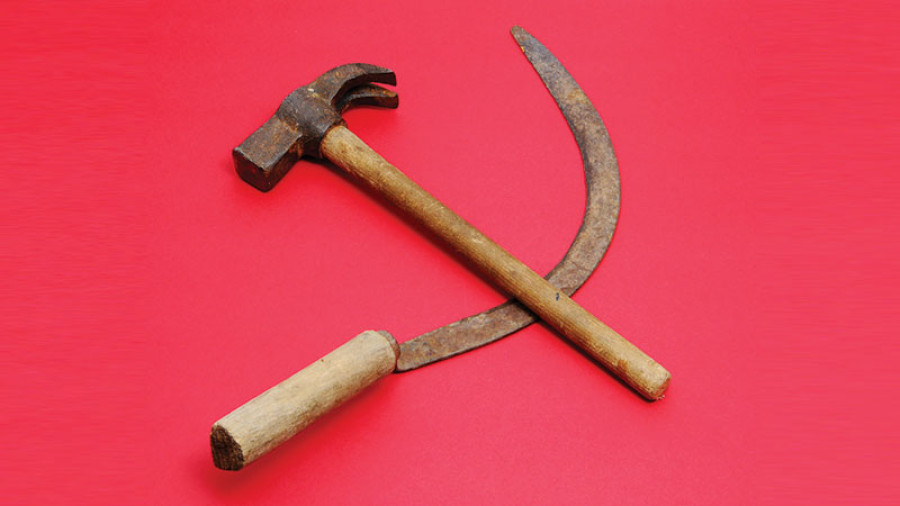Opinion
Dynamics and geo-politics
On October 3, the mainstream communist party, CPN-UML, and the main faction of combative communists, Maoist Centre, forged an electoral alliance.
Jainendra Jeevan
On October 3, the mainstream communist party, CPN-UML, and the main faction of combative communists, Maoist Centre, forged an electoral alliance. Ex-Maoist leader Baburam Bhattarai and his newly formed non-communist party Naya Shakti Nepal also joined the alliance. Owing to their vast ideological differences and due to the difficulties in adjusting when it comes to issues of leadership, unification may prove to be a non-starter.
UML and the Maoist Centre have always been separate parties, and the relations between the two soured during the latter’s insurgency. Attempts to merge parties never materialised and both groups fought tooth and nail to monopolise the traditional socio-political space and voter base of communists. With opposing views on almost everything from the history and societal structure of Nepal to the insurgency to the wave of ‘identity politics’ touted by the Maoists, the two parties seem to be separated by too many factors. They are poles apart on vital issues like ethnocentric/’Madhes-centric’ federalism and constitution amendment. In the past, UML accused the Maoist Centre of being left-extremists who toe the line of the Indian establishment, and the Maoists retaliated by saying that UML was revisionist and ultra-nationalist.
Wrong ways and right means
How the unification will materialise, let alone succeed and be sustained amid such contradictions remains to be seen. The right way to unite would have been to first agree on ideological framework, policies and programmes, and then work on the adjustment modalities of party rank and file. It didn’t happen that way; the whole decision of unification was made with minimal thought. The only basis, rationale and modus operandi of unification seems to be, “Why not unify our parties? After all, we are both ‘communists’.” That is why the whole emphasis of their 6-point deal is on seat-sharing ratios (60:40) for polls and rotational arrangement for party presidency and premiership.
The votes that have gone to UML and the Maoist Centre separately during the past will not be added automatically as a result of this alliance, as some believe. Several variables, including the popularity of candidates, decide a poll outcome. While a poll alliance is initially easier than unification, ensuring the success of either is equally difficult. The partial poll alliance between Nepali Congress (NC) and Maoist Centre during the recent local level elections wasn’t very successful, mainly because of their ideological differences. Though this particular poll alliance may not suffer this disadvantage, it may face resistance from grassroots level workers of both parties who have been fighting each other over the years. And those cadres are the backbone of any electoral success. It is safe to say that if the poll alliance fails, the unification too will fail.
In fact, even the poll alliance wasn’t a well thought-out idea. It was just a strategy thought out by UML in the aftermath of the last local level polls—the results of which fell far short of UML’s calculations. While it performed poorly in Province 2, UML narrowly came out at the top in other provinces. Results of provincial and federal elections, to be held only after a few months, were not expected to be any different. These results would mean that the UML would once again remain in the opposition, while the NC would hold power with the Maoist Centre as a partner. UML, therefore, seemed to have seen the benefits in breaking the NC-Maoist coalition and forging a poll alliance with the Maoist Centre instead.
Hopes and concerns
The rest of the nation, and the world, will judge and respond to the unification based on its merit. Does the alliance intend to overthrow the existing democratic order and establish a one-party communist rule? Do they want to amend the constitution and seize absolute power if they achieve absolute parliamentary majority? The Maoist Centre, even after they joined the mainstream polity, are known to hunger for such adventures. But, any such move is bound to cause backlash on both the domestic and external fronts, as democracy and capitalism with or without social security is the order of the day, communism is not. On the other hand, if unification is to bring about a two- or three-party democratic system, Nepali people will celebrate. This is because such systems have the potential to focus ideologies, which may bring political stability to deliver services and to develop the country. In that case, the unification will also positively pressure NC. Presence of a strong and unified adversary will force NC to improve. To survive, it either has to improve its performance or consign itself to history. It cannot always be a winner on account of its historical contributions and on account of an opponent’s divided vote-bank.
Foreign hand, really?
A ‘foreign hand’, especially that of India, is a factor that is widely believed to be behind any major political developments in this country. This time was no exception. Some pundits have even opined that in order to “Indianise” the nationalist UML from within, Delhi is pushing the Maoist Centre and Baburam to unite. The theory, however, isn’t convincing. This time, even China is widely accused of being behind this alliance-unification drama, an argument not without reason. However, with its non-interventionist, hands-off approach in Nepal’s internal affairs, China has always stuck to a ‘state to state only’ relationship. All Nepal needs is to contain Indian intervention and exercise her sovereign power and national independence. To invite China to meddle in Nepal’s dirty internal politics in order to counter India will be a recipe for disaster. That will only make Nepal a battle ground of another Cold War between two giants.




 9.12°C Kathmandu
9.12°C Kathmandu










%20(1).jpg&w=300&height=200)

